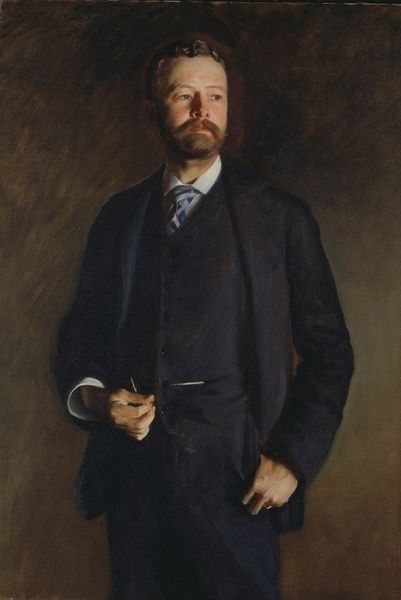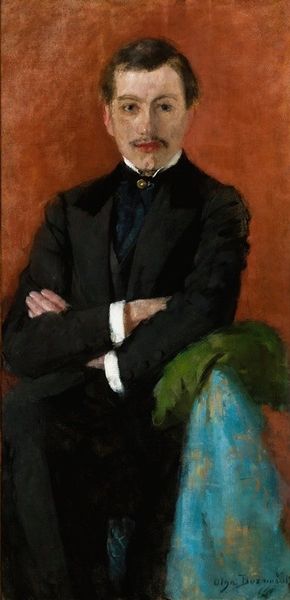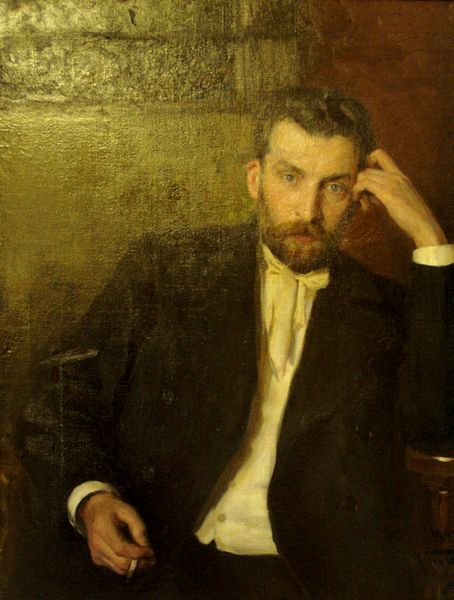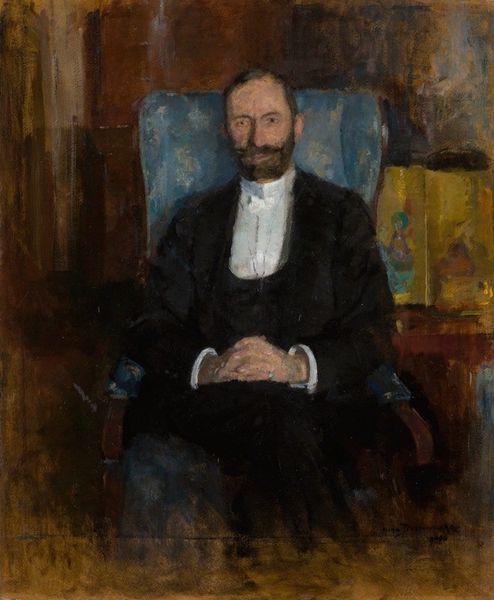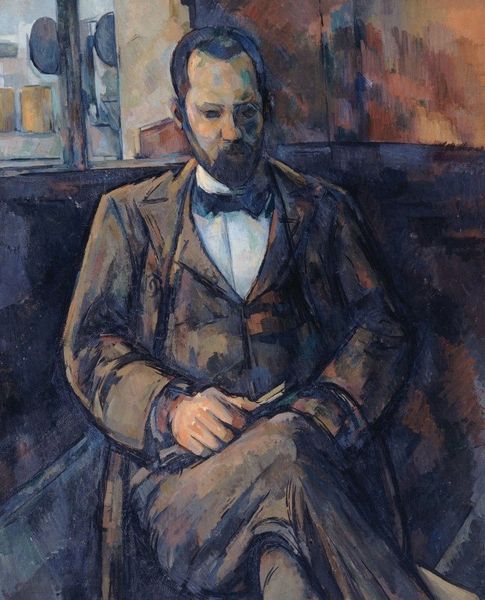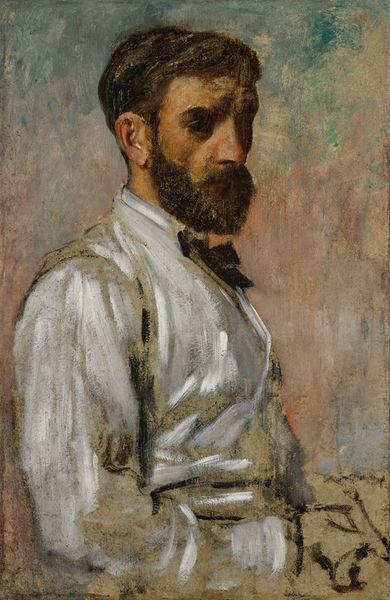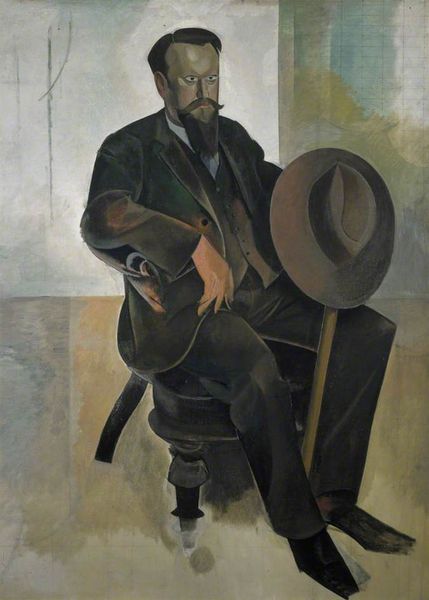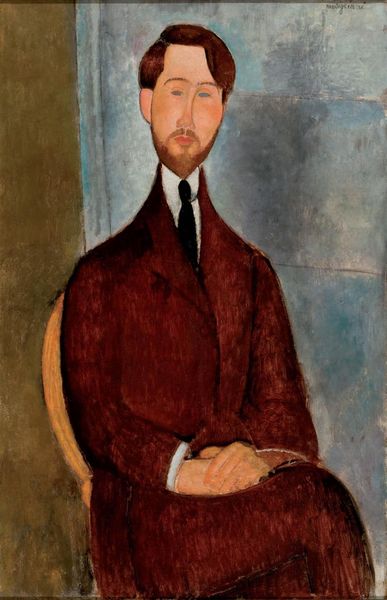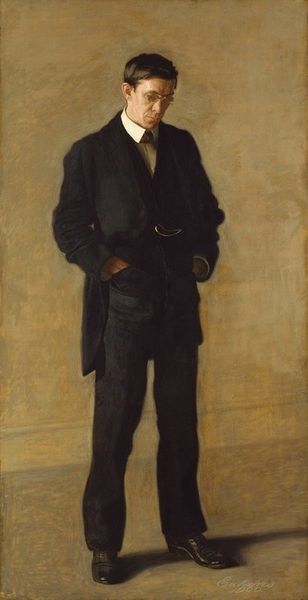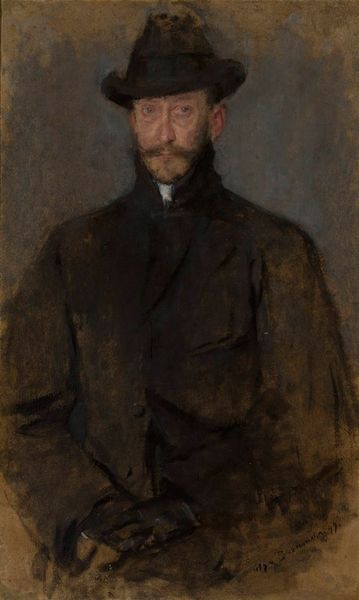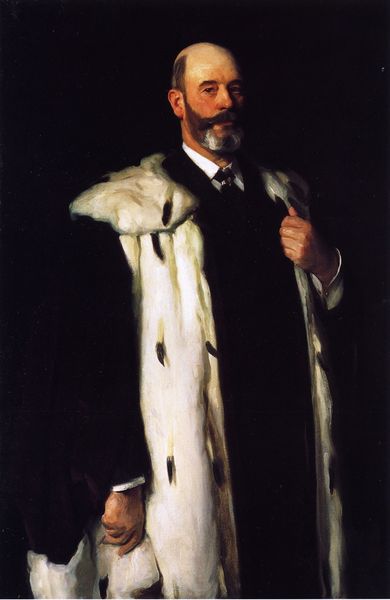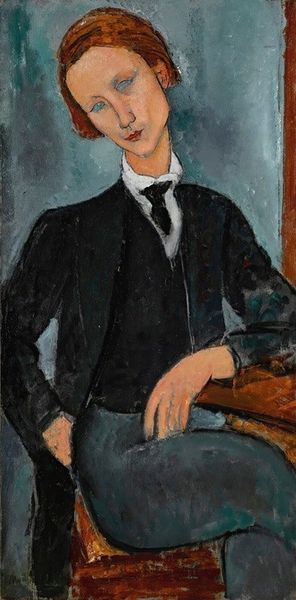
Copyright: Public Domain: Artvee
Curator: This is Jacek Malczewski's "Portrait of Michał Wywiórski," painted between 1892 and 1893. Editor: The somber tones immediately strike me. There's a distinct darkness to the color palette that gives it an almost weighty presence, despite the seemingly straightforward composition. Curator: Indeed, Malczewski was a key figure in the Young Poland movement, and this portrait reflects that era's interest in psychological depth and the portrayal of national identity through individual representation. Wywiórski himself was a prominent figure. Editor: I'm curious about the suit itself. The tailoring seems almost purposefully heavy. You can see the visible brushstrokes, layering of paint which enhances the texture and the overall density. It speaks volumes about the materials available and how the subject wanted to portray himself. Curator: Absolutely. The suit is a clear signifier of Wywiorski's social standing, a member of the landed gentry and active in agricultural societies, seeking ways of self-representation, the painting itself solidifies their place within the structures of the era. Editor: There's a contrast, too, between the very deliberate details—the carefully rendered mustache, the folds in his clothing—and the somewhat indistinct background. What kind of oil paints where in use, did Malczewski ground his own pigments, what was the canvas made of? It’s about material culture and understanding what those things communicate to a 19th century Polish audience. Curator: I find the contrast compelling too! But beyond materials I see this portrait being commissioned as an act of cementing the image and name of Wywiórski in the broader sociopolitical landscape of Poland at the time. Editor: Looking at this, one can imagine the material constraints and labour involved in its creation. How it serves less to commemorate and immortalize, and instead operates as an index to the economics of art-making at the turn of the century. Curator: Both readings are valuable—to examine the societal and to scrutinize the labor! The portrait acts as both a symbol and product of that very complex moment in history. Editor: Agreed. Ultimately, what resonates is the way material reality and social aspirations are indelibly linked within the frame.
Comments
No comments
Be the first to comment and join the conversation on the ultimate creative platform.
